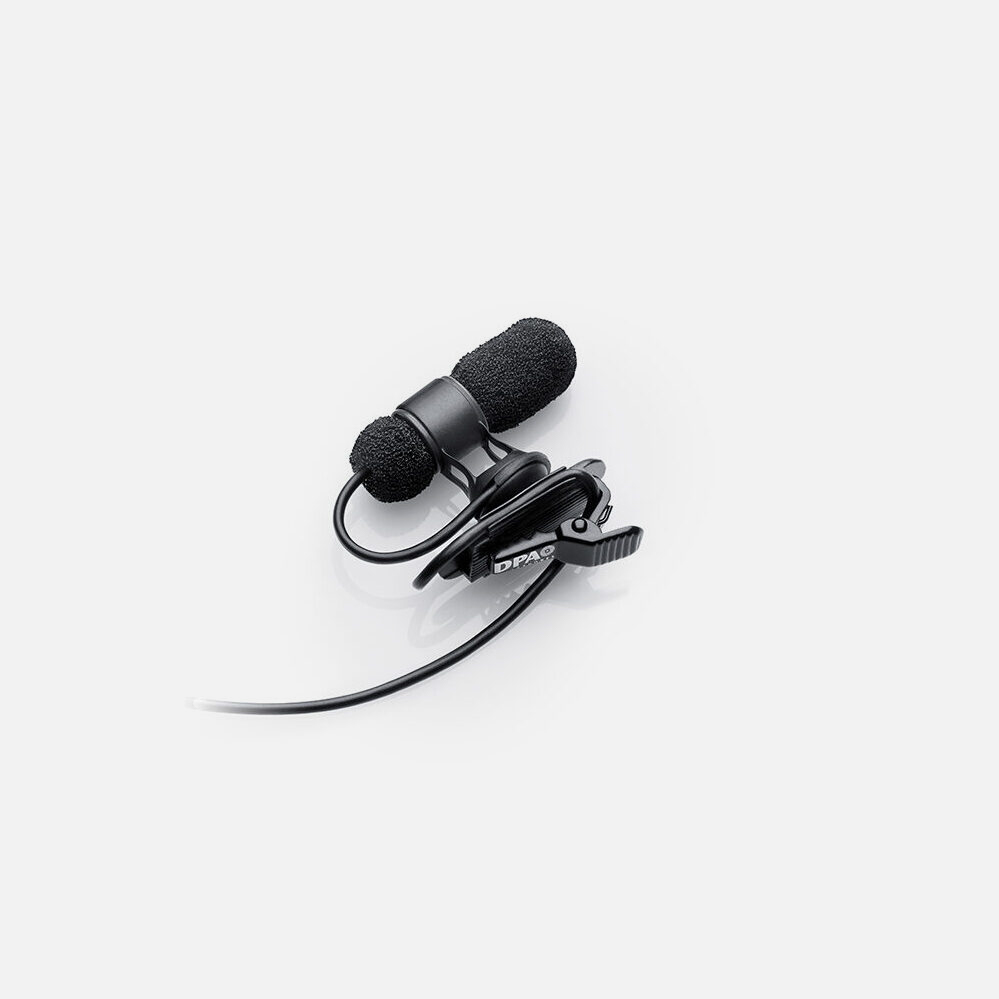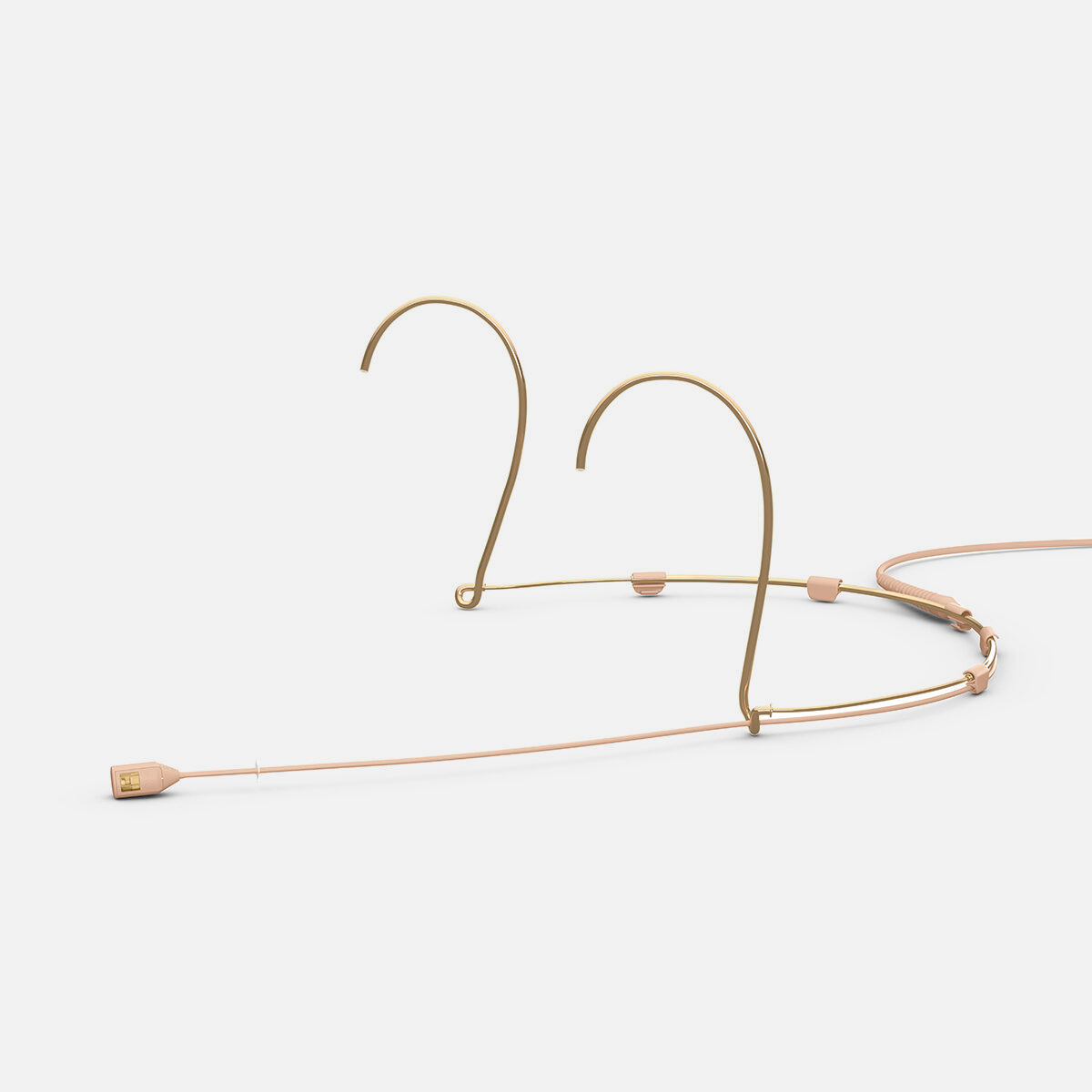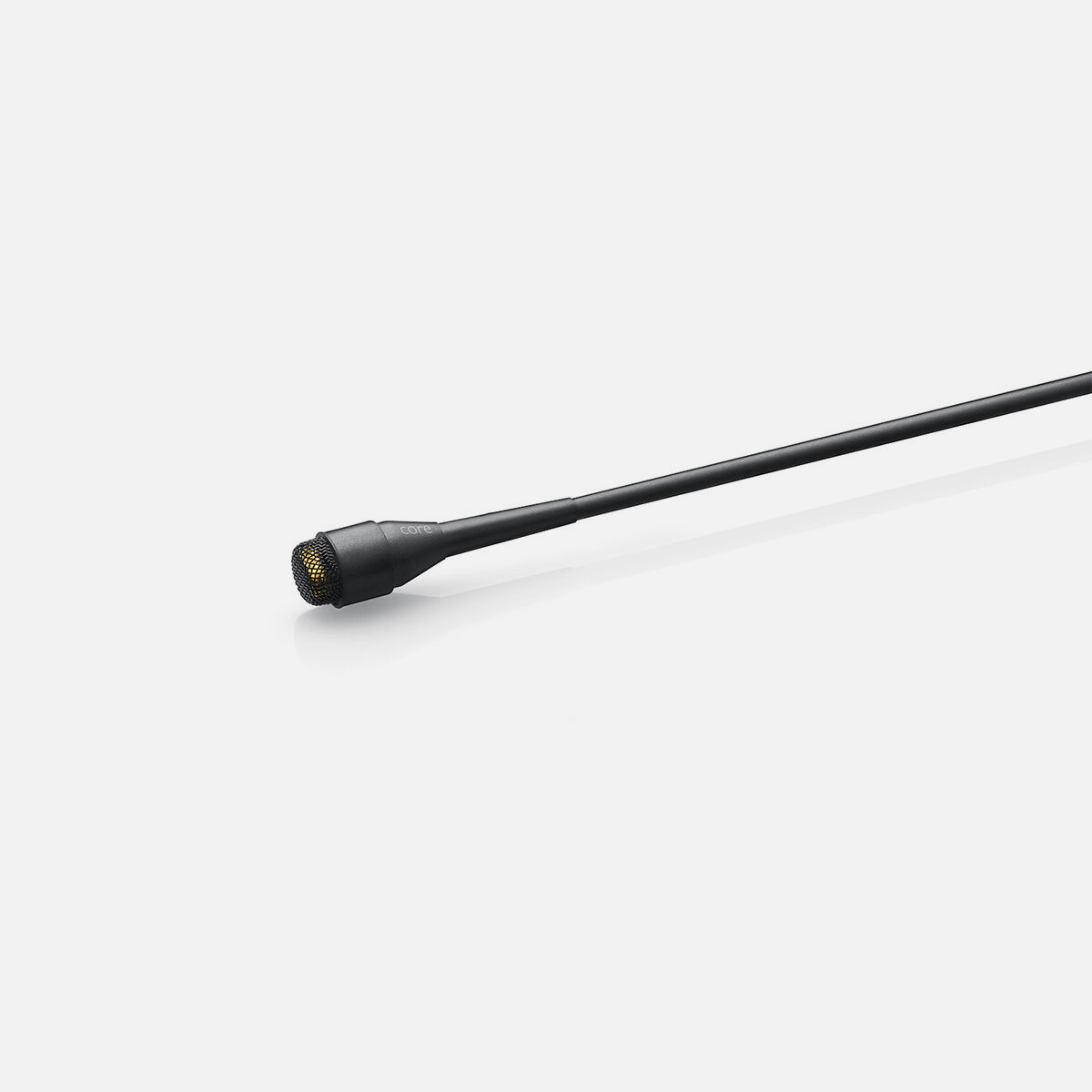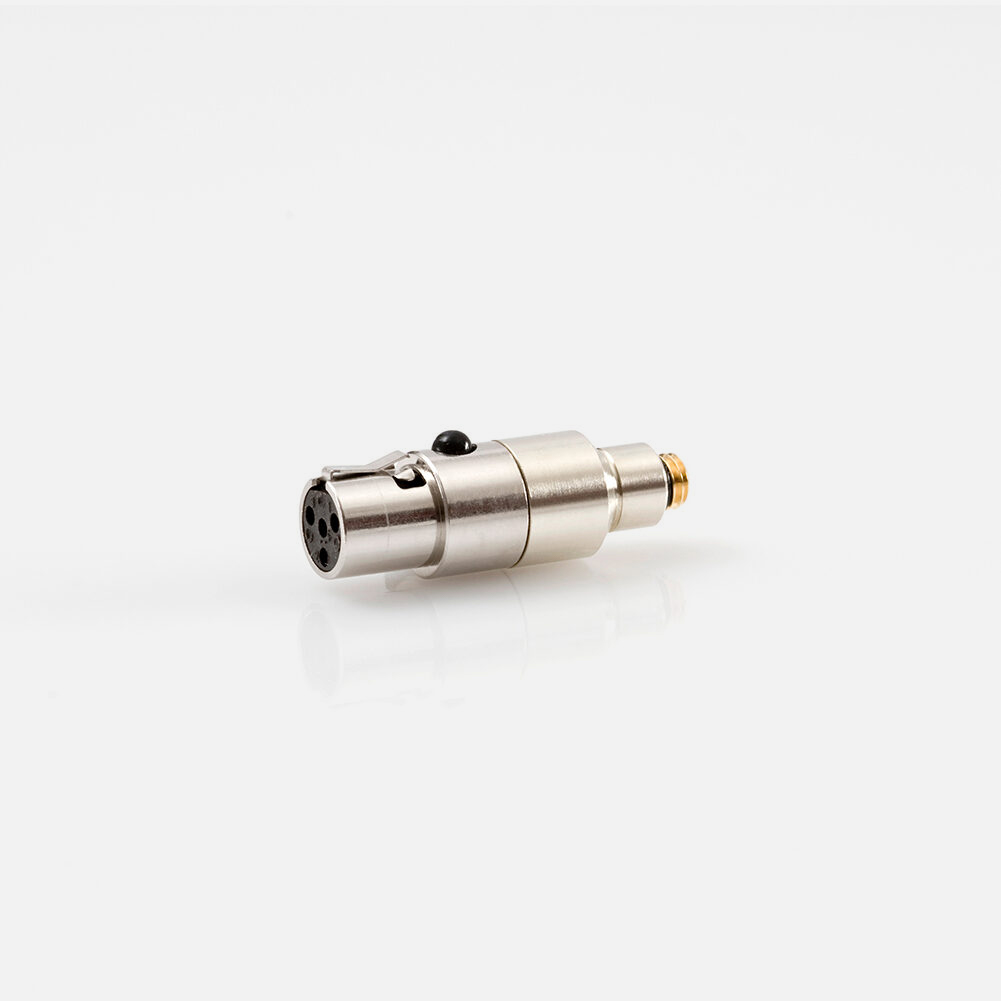The DPA CORE 4080 Cardioid lapel is acoustically pre-equalised, offering a 4 dB presence boost, which matches the mic’s chest placement perfectly. This makes the voice more distinguishable and improves speech intelligibility. Professionals will appreciate that it is lightweight and offers excellent speech reproduction.
The is delivered with a pre-mounted black pop filter in a holder with an integrated shock mount, fixed on a clip. An additional white pop filter is also included. Because of the flexible and practical mounting solution, the mic can easily be turned in all directions so it fits both left- and right-buttoned shirts.
 While the miniature omnidirectional mics are ideal for situations where a broad pickup pattern is essential and off-axis noise is not a problem, in some challenging acoustic environments a directional microphone is the better choice. The DPA CORE 4080 Cardioid Lapel captures the human voice with an unusually high degree of definition. This mic offers maximum side rejection and excellent sonic focus on the subject. It is designed for broadcast, conference and other live performances both in the studio and in the field.
While the miniature omnidirectional mics are ideal for situations where a broad pickup pattern is essential and off-axis noise is not a problem, in some challenging acoustic environments a directional microphone is the better choice. The DPA CORE 4080 Cardioid Lapel captures the human voice with an unusually high degree of definition. This mic offers maximum side rejection and excellent sonic focus on the subject. It is designed for broadcast, conference and other live performances both in the studio and in the field.

A bit about cardioids…
Named for its “heart shaped” polar pattern, a cardioid (or directional) microphone has the most sensitivity at the front and is least sensitive from the sides and at the back. They come in many variations – with wider or narrower angles of sensitivity (supercardioid, hypercardioid, wide cardioid etc.). Although cardioids also pick up sound coming in from the sides, this off-axis sound will normally be more or less coloured and damped. The unique DPA capsule technique however skips the colorisation of the sound coming from the sides or the rear of the mic and just reduces the sensitivity to these angles and thereby offers perfect sound stages. The amount of damping depends on the exact specifications of the mic.
A cardioid microphone is, by definition, damped -6 dB at the 90°side entry of the microphone but for many, the word cardioid generally covers mics with a directional pattern versus omnis, which pick up sound from all directions.
Due to their nature, directional mics are often used on the live stage – both during concerts as well as spoken-word events, to capture the focused sound of an instrument or voice. The narrow angle of sensitivity helps to minimise the bleed from other sounds on a busy stage. One thing to note with cardioid mics is the proximity effect, which causes an increase in bass response the closer the microphone is moved to the sound source. Therefore, when judging mic specs you should always look for a statement stating the distance at which the flat frequency response has been measured. In addition, cardioid mics are far more sensitive to wind, pop and handling noises than omni mics, so be sure to take precautions to guard against this.







Reviews
There are no reviews yet.